Description of Chilearinus Sharkey gen. nov. and status of Nearctic Earinus Wesmael, 1837 (Braconidae, Agathidinae) with the description of new species
- PMID: 36761440
- PMCID: PMC9848775
- DOI: 10.3897/zookeys.1099.81473
Description of Chilearinus Sharkey gen. nov. and status of Nearctic Earinus Wesmael, 1837 (Braconidae, Agathidinae) with the description of new species
Abstract
The Neotropical members formerly included in Earinus Wesmael, 1837 are transferred to a new genus, Chilearinus Sharkey gen. nov. Presently three Nearctic species of Earinus are recognized, i.e., Earinuserythropoda Cameron, 1887, Earinuslimitaris Say,1835, and Earinuszeirapherae Walley, 1935, and these are retained in Earinus. Earinuschubuquensis Berta, 2000 and Earinusscitus Enderlein, 1920 are transferred to Chilearinus, i.e., C.chubuquensis, and C.scitus, comb. nov. One other species is transferred to Chilearinus, i.e., Microgasterrubricollis Spinola, 1851, Chilearinusrubricollis, comb. nov. Two other Neotropical species, Earinushubrechtae Braet, 2002 and Earinusbourguignoni Braet, 2002 were described under the genus Earinus but are here transferred to Lytopylus, L.hubrechtae, and L.bourguignoni comb. nov. Two new species of Chilearinus are described, C.covidchronos and C.janbert spp. nov. The status of Agathislaevithorax Spinola,1851, Agathisrubricata Spinola,1851, and Agathisareolata Spinola, 1851 is discussed. A neotype is designated for Earinuslimitaris (Say, 1835) and diagnosed with a COI barcode. Earinusaustinbakeri and Earinuswalleyi spp. nov. are described. The status of both Earinus and Chilearinus in the Americas is discussed. A revised key to the genera of Agathidinae of the Americas is presented.
Keywords: Accelerated taxonomy; BIN code; COI DNA barcode; COI barcode Hymenoptera; Ichneumonoidea; conservation.
Michael J. Sharkey, Austin Baker, Ramya Manjunath, Paul D. N. Hebert.
Figures
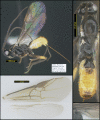
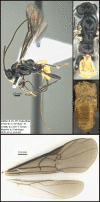

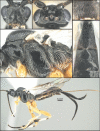


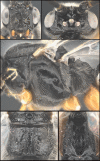


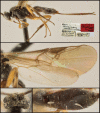

References
-
- Berta DC. (2000) Contribución sobre las especies neotropicales del género Earinus Wesmael (Himenóptera: Braconidae, Agathidinae). Boletin de la Asociacion Espanola de Entomologia 24: 229–241. https://notablesdelaciencia.conicet.gov.ar/handle/11336/78424
-
- Braet Y. (2002) Contribution to the knowledge of Agathidinae (HymenopteraBraconidae) from French Guiana with description of two new species of Earinus Wesmael, 1837. Belgian Journal of Entomology 4: 41–51.
-
- Ivanova NV, Grainger CM. (2007) CCDB protocols, COI amplification. http://ccdb.ca/site/wp-content/uploads/2016/09/CCDB_Amplification.pdf [accessed 1 July 2019]
-
- Ivanova NV, Dewaard JR, Hebert PDN. (2006) An inexpensive, automation‐friendly protocol for recovering high‐quality DNA. Molecular Ecology Resources 6(4): 998–1002. 10.1111/j.1471-8286.2006.01428.x - DOI
-
- Muesebeck CFW. (1927) A revision of the parasitic wasps of the subfamily Braconinae occurring in America north of Mexico. Proceedings of the United States National Museum 69(2642): 1–73. 10.5479/si.00963801.69-2642.1 - DOI
LinkOut - more resources
Full Text Sources
Miscellaneous
